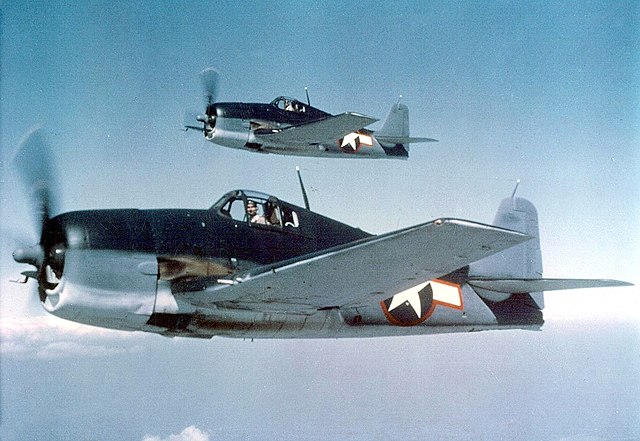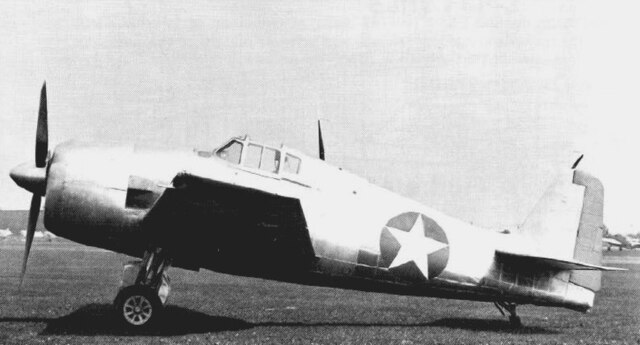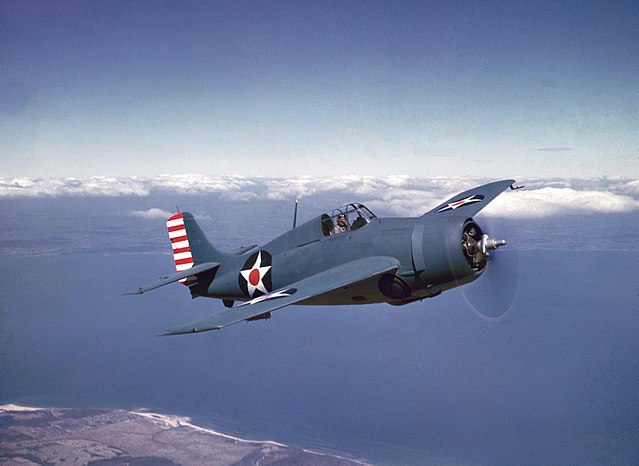The Grumman F6F Hellcat is an American carrier-based fighter aircraft of World War II. Designed to replace the earlier F4F Wildcat and to counter the Japanese Mitsubishi A6M Zero, it was the United States Navy's dominant fighter in the second half of the Pacific War. In gaining that role, it prevailed over its faster competitor, the Vought F4U Corsair, which initially had problems with visibility and carrier landings.
Grumman F6F Hellcat
Unpainted XF6F-1 prior to its first flight (1942)
F6F-3 aboard USS Yorktown has its "Sto-Wing" folding wings deployed for takeoff (circa 1943-44).
An early F6F-3 in blue-gray over light gull-gray (1943)
The Grumman F4F Wildcat is an American carrier-based fighter aircraft that entered service in 1940 with the United States Navy, and the British Royal Navy where it was initially known as the Martlet. First used by the British in the North Atlantic, the Wildcat was the only effective fighter available to the United States Navy and Marine Corps in the Pacific Theater during the early part of the Second World War. The disappointing Brewster Buffalo was withdrawn in favor of the Wildcat and replaced as aircraft became available.
Grumman F4F Wildcat
The XF4F-3 in 1939; it was written off in a fatal accident on 16 December 1940
An early F4F-3 with prop spinner and cowling guns
A Fleet Air Arm Wildcat in 1944, showing "invasion stripes"








